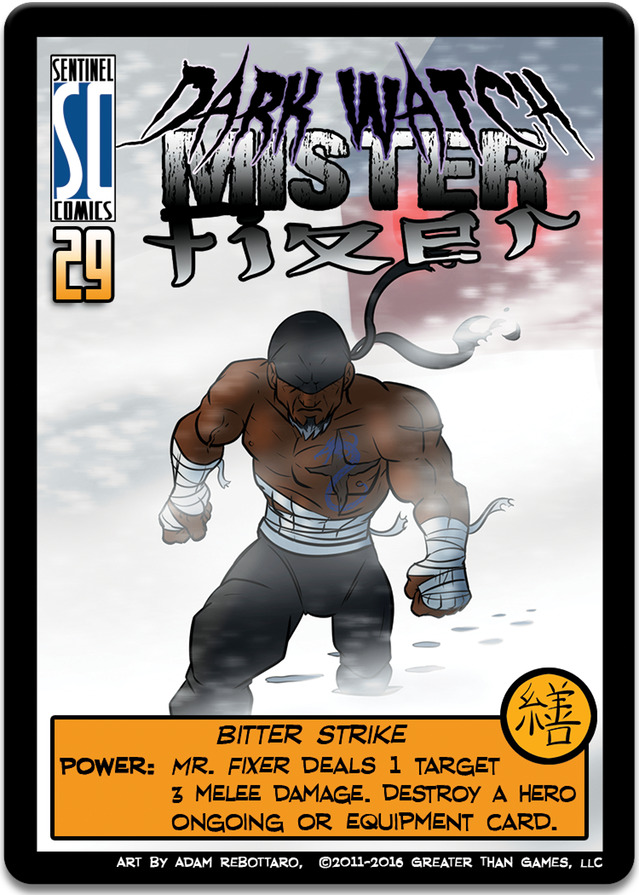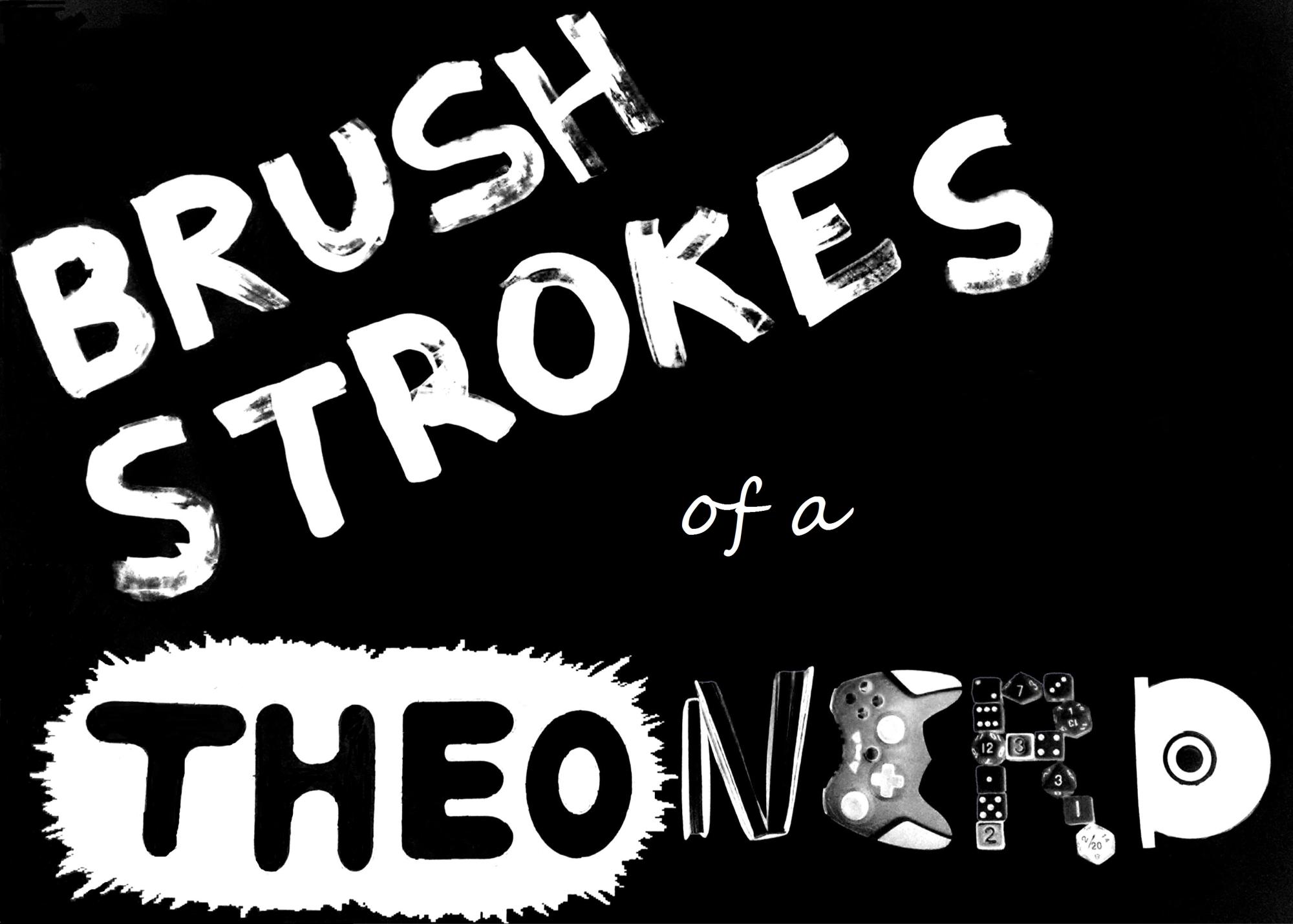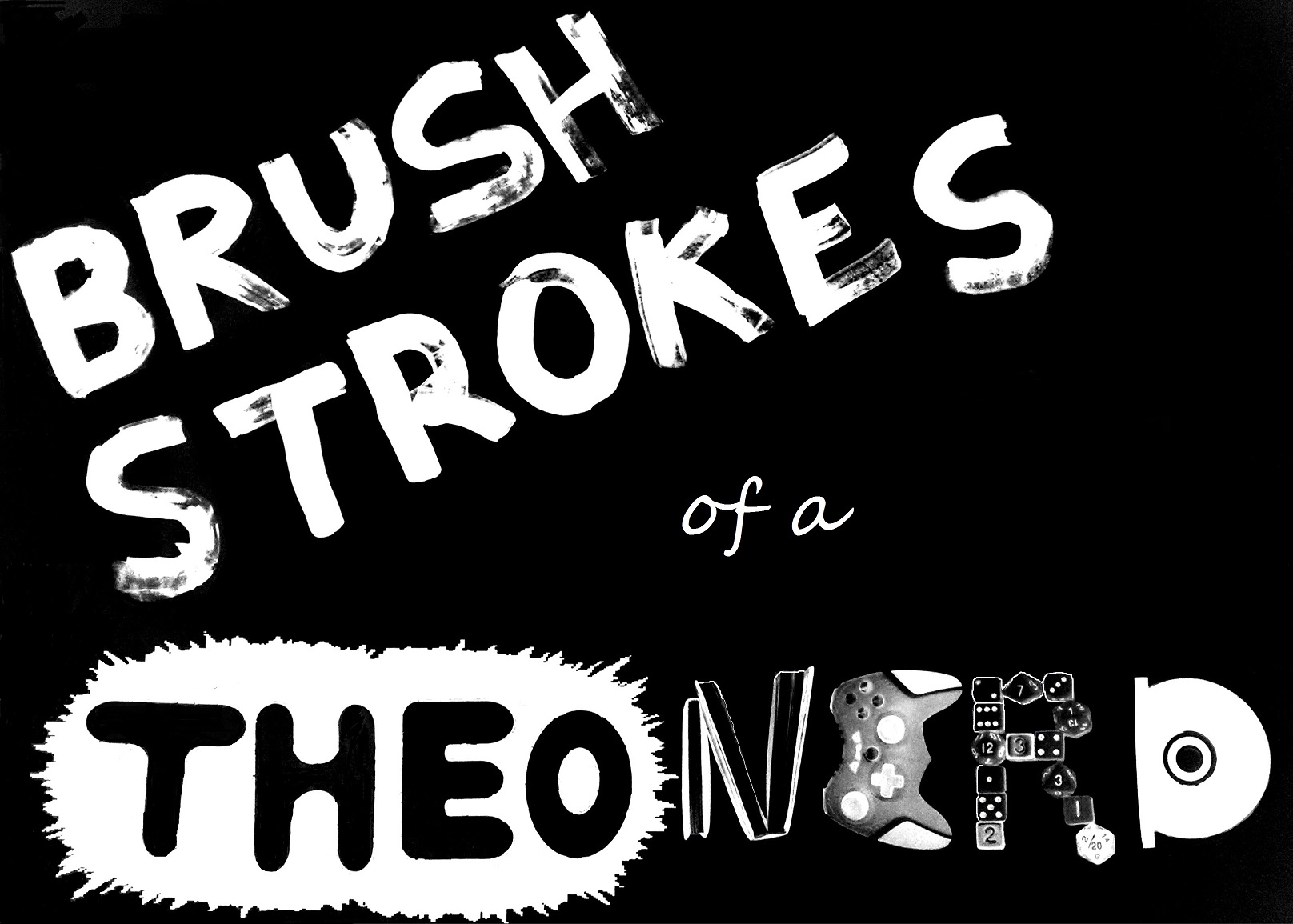
Life Anew
By Anthony Casperson
2-17-18
Any long-term readers might have come to see that one of my favorite tabletop games is Sentinels of the Multiverse. (I’ve used stories from the card game several times already.) But one character whose story I find very interesting is Mister Fixer.
A blind martial artist who became a superhero several decades ago. He turned aside from stopping bad guys to open a martial arts school. Then, after some of his students were killed, he closed the center and became a mechanic. Eventually, he returned to being a superhero, as well as being a sort of mentor for some other heroes (including a woman who had been hired to assassinate him).
Oh, and then he died (not by the assassin whom he began to mentor, but one whom he had taught martial arts to years ago).
Killed by one of his old students who had been driven to a life of crime, Mister Fixer fell. His body was taken by an old nemesis and turned into a zombie-like vessel to anchor the hero’s soul to it. Haunting his own zombie corpse. (I told you the story was interesting, not a happy one.)
While his story continues from there (with a little glimmer of hope mixed in), I find this understanding of resurrection to be interesting. It exemplifies one of two popular portrayals of resurrection: coming back to life is dangerous.
A very similar parallel found in DC comics is Ra’s al Ghul’s Lazarus Pit, which also brings people back a little less human than they were before they died. Or there’s the good ol’ Stargate SG-1’s sarcophagi, which follow a similar end if used too often. Even the concepts of zombies and vampires show the negative thought of the dead brought back to “life.” (And I’m talking pre-sparkle and hyper-sexualized vampires. Even pre-Dracula. Those old myths are scary.)
The other popular portrayal of resurrection is that you get brought back to life and continue like nothing ever happened. The Doctor’s regeneration from Doctor Who, anybody? And let’s not even talk about video games where your character dies and you just reset to the last game save, forgetting that whole death thing ever happened.
Spanning the gap between these two portrayals is D&D’s Resurrection spell. The being brought back to life has problems for about four days. And then everything’s back to normal. (Unless you’re playing in Chult, but that’s another story entirely.)
But do either of these portrayals truly show what resurrection is?
Until Resurrection Sunday (a.k.a. Easter), I’m going to be writing about what the cross, burial, and resurrection of Jesus call us to. We’ll be preparing for Resurrection Sunday through the entire season of Lent. Looking at the events of Easter weekend, we’ll see what we followers of Jesus have been called to do.
And we’ll start with an easy one. The cross calls us to bear witness of the new life that is to come. You see, resurrection isn’t something terrible and horrible. It’s a showcase of God’s power to bring life to a sin-wracked, dying body. A return to what humanity was supposed to be before sin entered the world.
While we wait for our bodies to catch up with the renewing of our spirits, the life within still bears witness to the power of the resurrection (both Jesus’ and our future resurrection).
Did you know that in the record of Jesus’ death, burial, and resurrection found in Matthew 27-28 Jesus was not the only dead body raised? I know it sounds kinda weird, but it’s true. Matthew 27:52-53 says that on the day Jesus was resurrected, tombs were opened and the dead came back to life. They went into the city of Jerusalem and many saw them. Why’d this happen? They testified to the power of the resurrection of Jesus.
One professor I studied under in college hypothesized that the Holy Spirit came down to the body of Jesus and breathed (spirit also means “breath, wind” in Hebrew and Greek) life back into the body, but then he got excited and breathed life into the nearby dead as well, bringing them back to life. It’s not the same type of resurrection as Jesus, because those bodies returned to the grave (when and how we don’t know), but that’s not really the point. The point is that the dead testified to the resurrection of Jesus and the power of God through acceptance of it.
And that’s what we followers of Jesus have been called to do as well. We testify to a dead and dying world of the life that is possible through Jesus. Missionaries of the resurrection through our very own resurrected life.
Resurrection doesn’t leave us less human, it returns us to what humanity was meant to be. And that life is far from just continuing like nothing ever happened. The resurrection calls us to a new life. One that far surpasses anything we have ever lived.
So, as we this time to focus on the death, burial, and resurrection of Jesus over the next few weeks, let’s live up to the new and better life of the resurrection. Living testimonies of God’s power over the death of the world.


Mister Fixer, post death.


